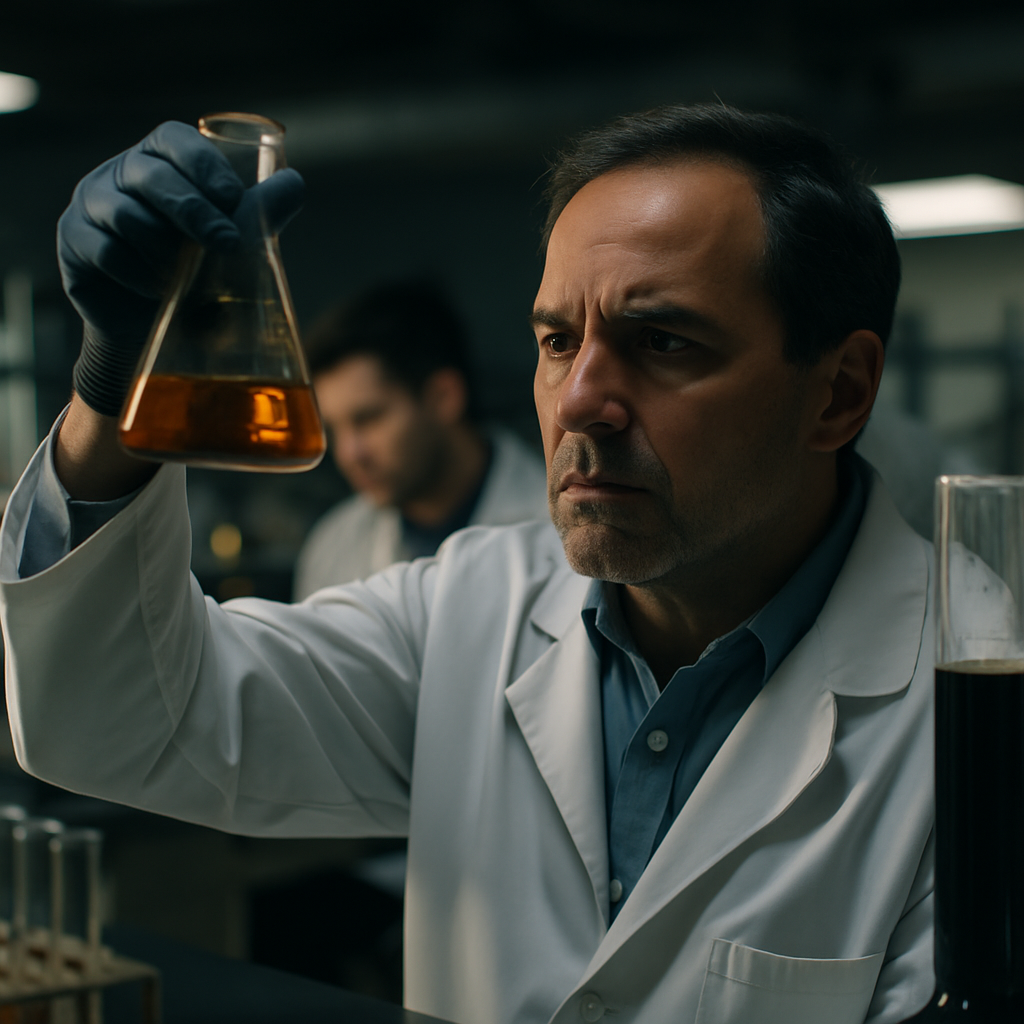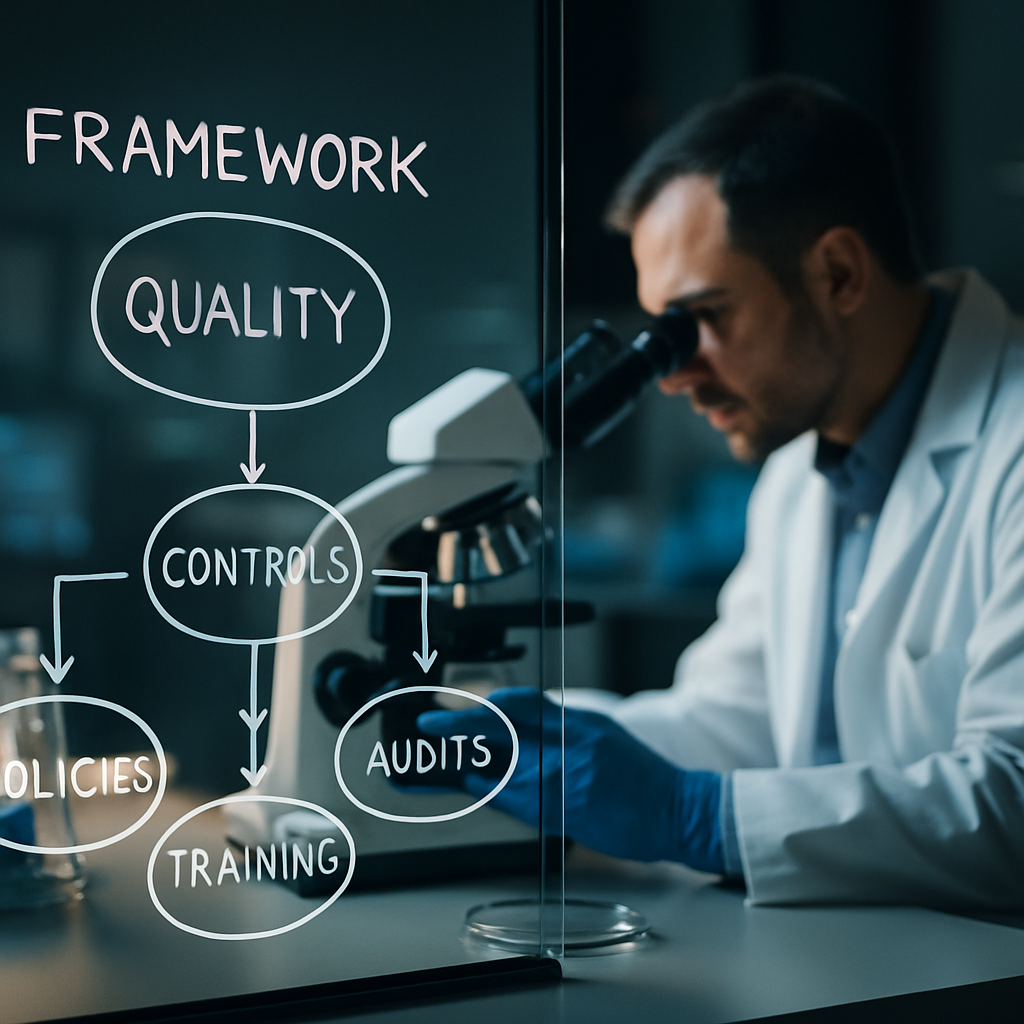Why Quality Control in Oil and Gas Labs Isn’t Optional—It’s Survival
- Ali Kitabi
- September 24, 2025
- No Comments
Why Quality Control in Oil and Gas Labs Isn’t Optional. It’s Survival
If your lab outputs one flawed report, nobody knows until the day someone does. That’s when the lawyers call.
The Invisible Mistake That Nearly Cost Millions
It started with a single chloride test. Off by 6%. Easy to miss. The offshore operator adjusted flow slightly based on that result, which in turn affected six pipelines. Within weeks, corrosion rates accelerated. Repairs topped $2.1 million before anyone traced it back to the lab.
This is no work of fiction; it’s a haunting reality that oil and gas lab managers strive to erase from their memory. However, not addressing the root problem doesn’t make it disappear. Mastering quality control is not merely about perfection; it is essential for managing liability, preserving reputation, and securing long-term survival.
Why Most Oil & Gas Labs Miss the Real Quality Threat

You don’t lack procedures. You’ve got SOPs, a LIMS, audits, and training. However, even with all that, minor errors still slip through. Why? Most lab-quality systems focus on documentation, rather than behavior. They check that forms are filled, not that thinking is aligned. This builds a mirage of control, until a result breaks reality.
The deeper problem is bandwidth. Lab managers wear too many hats. Every day brings fires to put out: instruments down, samples delayed, clients pressing. In that rush, quality assurance becomes something you assume is happening, not something you verify.
The Cost of ‘Good Enough’ in High-Stakes Environments

Let’s be blunt. A 2% error in a clinical laboratory could result in a misdiagnosis. In the oil and gas industry, it can mean using the wrong metal alloy, administering the wrong inhibitor dose, or, worse, misjudging flow assurance risks. The effects aren’t immediate, but they’re cumulative. And by the time you catch them, they cascade across teams.
That’s why leading labs invest aggressively in active quality control protocols. While paperwork may not be the most enjoyable task, it plays a vital role in ensuring that we identify any anomalies before they escalate into larger issues. By staying diligent and thorough, we can enhance the reliability of our lab and maintain our high standards of quality and safety. Let’s work together to make this process as effective as possible. And lab performance is cumulative. Perception is your currency.
Dream Beyond’s Framework for Bulletproof Lab QC

At Dream Beyond, we guide oil and gas laboratories through the implementation of failure-resistant quality systems. Our approach begins with mindset, progressing through data modeling, human behavior, and real-time thresholds.
Think of it as a high-resolution filter for error. The objective goes beyond simply checking boxes; it’s about identifying the crucial 0.1% error that can compromise an otherwise stellar 99.9% record. Ensuring accuracy is essential for excellence. Our clients consistently exceed ISO standards in their daily operations.
3 Layers of Protection: The Plan That Works Under Pressure
- Embedded Peer Checks: We incorporate human QA validation into the process as intelligent friction that enhances team vigilance, rather than treating it as extra work.
- Software-Backed Redundancy: Our platform flags anomalies based on historical trends and condition-based thresholds. No more assuming a result “makes sense.”
- Live Training + Feedback Loops: Not presentations. Real labs. Real data. We reverse-engineer near misses to update protocols in real-time.
Explore our quality consulting services to see how they align with your lab’s needs.
The Proof: Labs That Stopped Flying Blind
One regional upstream lab was facing inconsistent BSW (Basic Sediment & Water) values, creating contract disputes. We helped them implement a three-trigger check system. Within 8 weeks, consistency tightened by 23%. No more debates with operators.
Another major pipeline integrity group partnered with us to rethink their materials testing QC. The result: zero critical discrepancies across 11 audits in a year. That’s not luck; it’s the mastery of processes and a meticulous attention to detail that are deeply embedded in our culture.
Your Move: How to Lead a Lab That Gets It Right Every Time
The best labs strive for unwavering excellence, not mere compliance. This begins with a commitment: transitioning from reactive fixes to proactive excellence.
What happens if you do nothing? Probably nothing at first. But the risk compounds every week. Quietly. Invisibly. Until it doesn’t.
What happens if you lead the change? The team learns to spot what others miss. Clients trust more deeply. Auditors breeze through. And you sleep better.
Talk to Dream Beyond today. We’ll help you build the kind of lab others benchmark against. Because when quality control works, everything else gets easier.
What quality control procedures are essential for oil and gas labs?
Beyond routine calibrations and document checks, essential QC includes statistical trend analysis, cross-technique validations, blind sample testing, and real-time peer review. The goal is to be reliable under pressure, not just to meet standards.
My lab already follows ISO 17025. Isn’t that enough?
Compliance sets the floor, not the ceiling. ISO provides structure, but real-world operations demand dynamic controls responsive to context, personnel shifts, and anomalies. Leading labs go beyond checklists to prevent subtle error pathways.
How quickly can improvements to lab QC show measurable benefits?
Labs working with Dream Beyond typically see measurable improvements, fewer reruns, higher client trust, and smoother audits within 6 to 12 weeks. The impact is tangible because we prioritize practical actions, not just forms and flowcharts.
